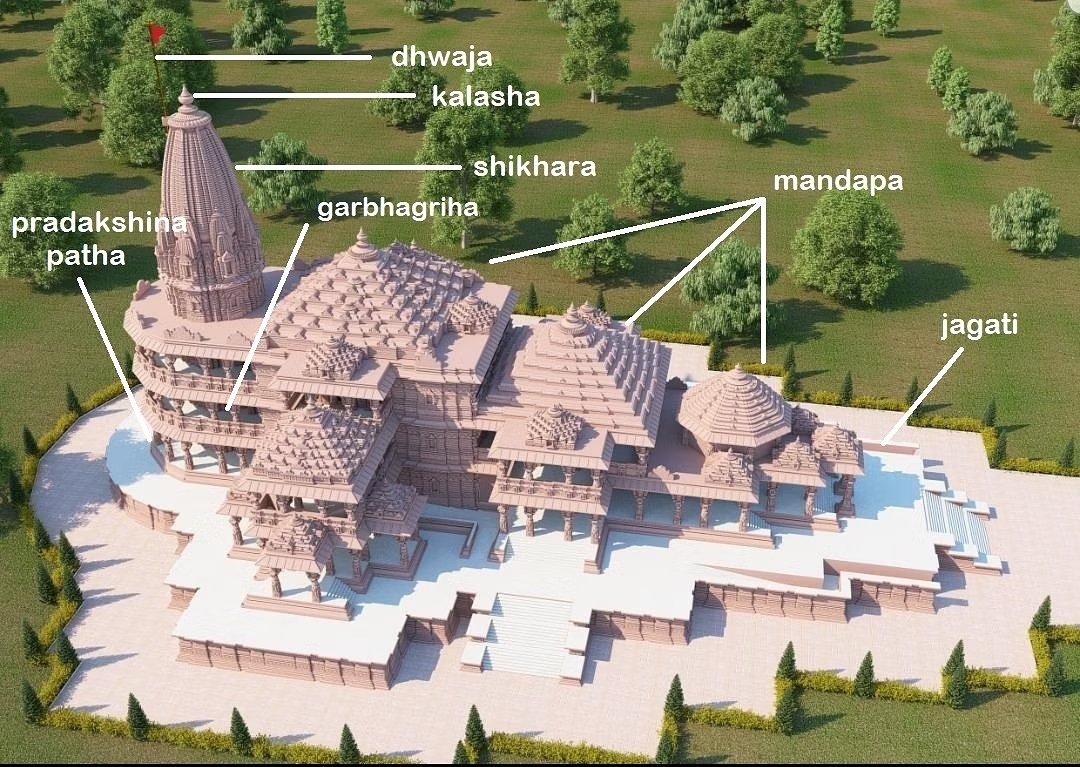-
13 Dec 2023
GS Paper 1
Indian Heritage & Culture
Day 21 : Discuss the main features and regional variations of nagara style of temple architecture in India. Give examples of some prominent temples built in this style. (250 Words)
- Introduce the Nagara style as one of the major architectural styles and its features
- Discuss the regional variations of nagara style and some examples of nagara style temples
- Conclude by emphasizing the Nagara style architecture’s contribution to India's architectural heritage.
Introduction
The nagara style of temple architecture is a style that is prevalent in the northern and western parts of India. It is characterized by its tall, pyramidal towers called shikharas, which are topped by a bulbous finial called a kalasha. Nagara temples are typically built on a high platform, and the garbhagriha (sanctum) is always located directly under the tallest tower. There are many subdivisions of nagara temples depending on the shape of the shikhara, such as rekha-prasad, shekari, bhumija, valabhi, and phamsana.
Body
Some of the regional variations of nagara style:
- Odisha School: The shikhara (deul) rises vertically before curving inwards at the top. The main type is square while the upper reaches are circular. The temples have intricately carved exteriors and usually bare interiors. Examples: Lingaraja Temple, Konark Sun Temple, Jagannath Temple.
- Khajuraho School: The temples are famous for their erotic sculptures and elaborate ornamentation. The shikhara is of the shekari type, with a main spire and smaller spires on the sides and corners. The temples are built on a high platform and have a mandapa (hall) in front of the garbhagriha. Examples: Kandariya Mahadeva Temple, Lakshmana Temple, Chausath Yogini Temple.
- Solanki School: The temples are influenced by both nagara and dravida styles. The shikhara is of the bhumija type, with a flat projection comprising of a central spire and miniature spires on the sides. The temples have elaborate carvings and sculptures, and often feature a torana (arched gateway) at the entrance. Examples: Sun Temple at Modhera, Rudra Mahalaya Temple, Dilwara Temples.
Some other examples of nagara style temples:
- Ram Mandir, Ayodhya: This majestic temple, located in Ayodhya, Uttar Pradesh, is dedicated to Lord Rama. It's designed in the nagara style of temple architecture, characterized by its towering spires or shikharas.
- Teli Ka Mandir, Gwalior: A 9th century temple built in the valabhi style, with a rectangular plan and a barrel-vaulted roof.
- Udayeshwar Temple, Udaipur: A 11th century temple built in the bhumija style, with a square plan and a pyramidal roof with multiple spires.
- Jagmohan of Konark Temple: A 13th century temple built in the phamsana style, with a rectangular plan and a roof with numerous slabs that rise upwards in a gentle slope.
Conclusion
The Nagara style of temple architecture in India is characterized by its towering shikhara, intricate carvings, and regional variations. The style has contributed to the construction of many magnificent temples across northern and western India, each with its own unique features and cultural significance.





